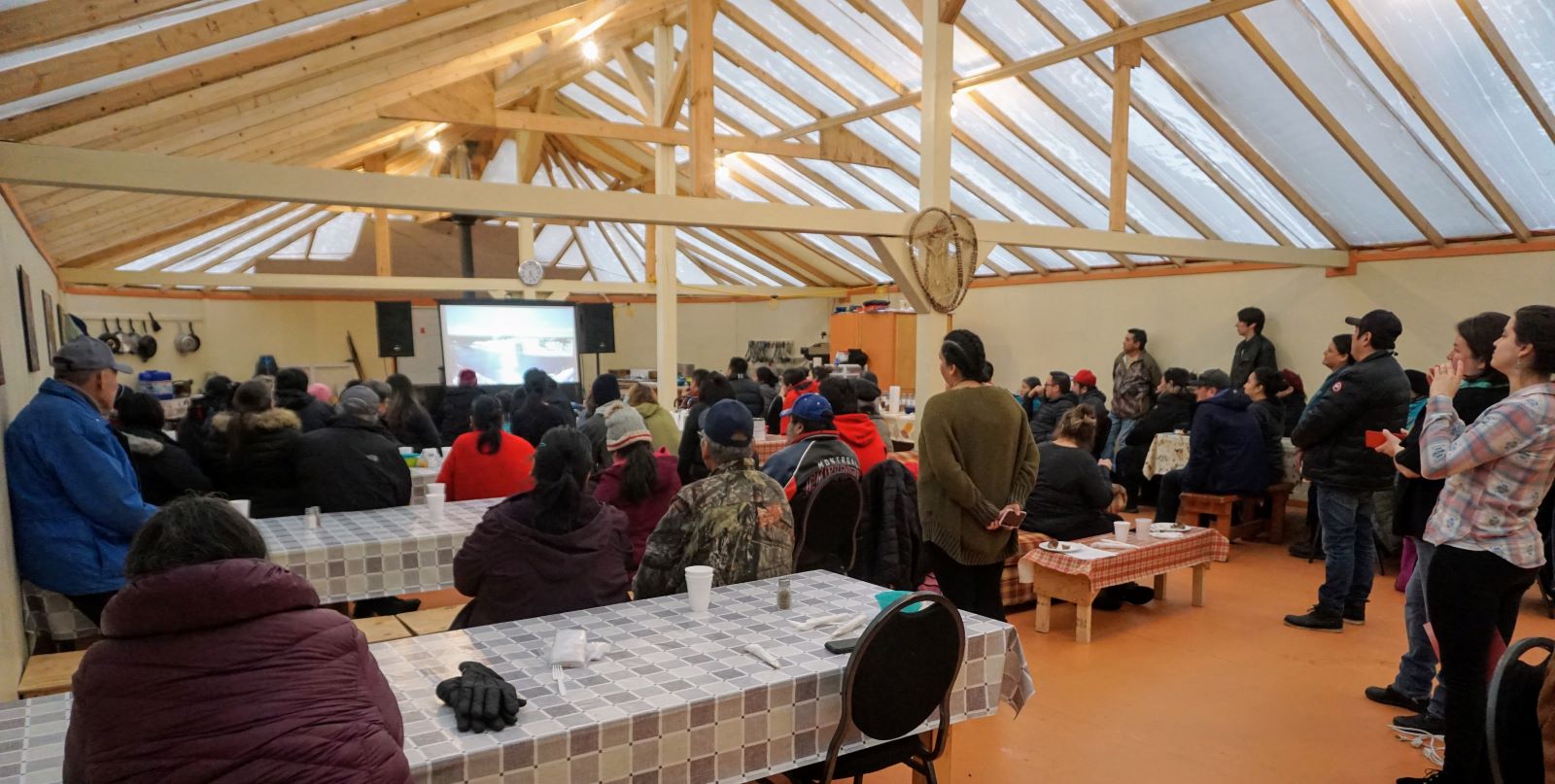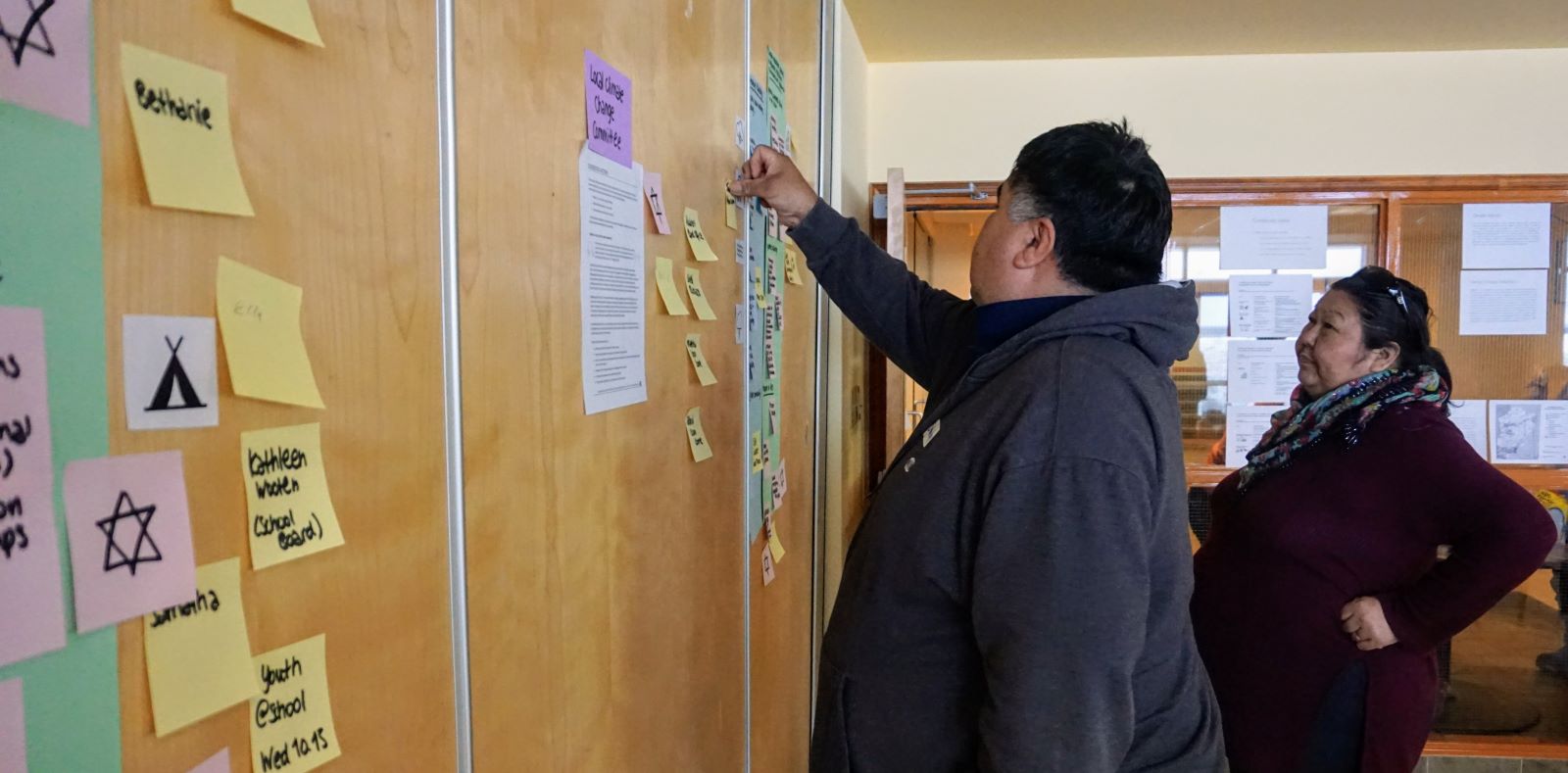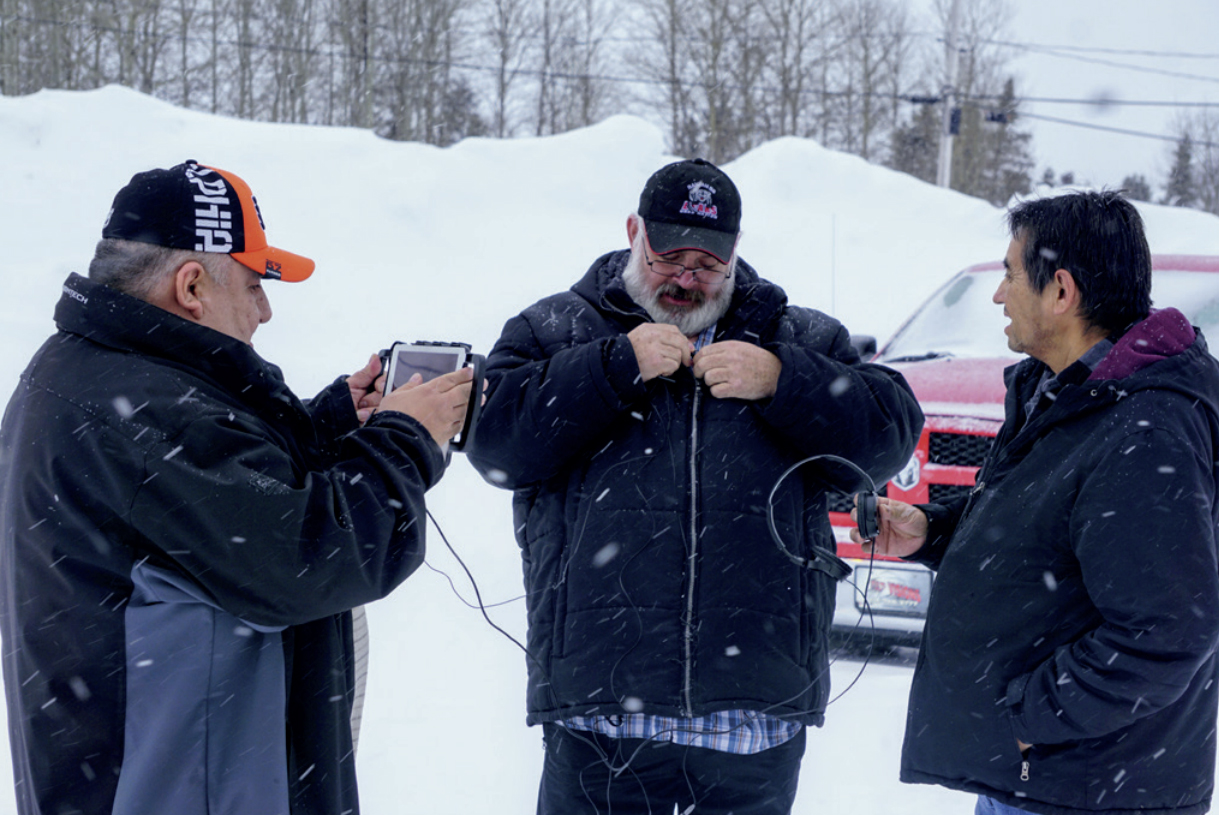Cree Resilience to Climate Change: Adaptation Action plan for the Cree Nation of Mistissini
This project helped to engage and empower community members in a participatory process on climate change adaptation It also helped to recognize the importance of interactions between different knowledge systems focussing on solutions, and highlights the need to adopt a multidisciplinary and holistic approach
Project details
Principal(s) investigator(s)


Context
In Mistissini, community members have observed more extreme weather events, unpredictable weather patterns, as well as seasonal shifts and changes in flora and fauna. These changes are of high concern as they affect land access, food security, health, safety and infrastructure.
Scientific evidence supports these observations in Eeyou Istchee where annual mean air temperature has increased by 1.5°C in the last 35 years, with an increase of 2-3°C in the winter months. Studies have shown that this warming affects a broad range of natural and human systems.
The severity of observed and projected changes (e.g. temperature, rainfall, snow, ice) and their environmental and socio-economic repercussions require collective actions and mobilized efforts to adapt current practices. It is therefore time for community members to come together and plan how they would like to respond as a community to observed and predicted changes. This will enable them to protect their natural and cultural heritage, identity, livelihoods, health and infrastructure for future generations.
Photo : Northern Visions Photography & Video
Objective(s)
-
Find collective solutions to cope with impacts from climate change on the land and its residents;
-
Increase local resilience by developing an adaptation action plan for community use in Mistissini to lower the risks associated with observed and future changes.
Methodology
Through the use of a participatory approach, the current project included:
-
Sharing the findings and recommendations regarding CC impacts and adaptation measures from the "Climate Change in Eeyou Istchee" project by the Cree Trappers' Association (CTA) (2009-2011) and Ouranos' synthesis report on the "State of climate change and adaptation knowledge for the Eeyou Istchee James Bay territory" (Hennigs & Bleau 2017);
-
Training of a local researcher and video team to conduct interviews with community members;
-
Initiating two stakeholder meetings to discuss local climate-related impacts and potential adaptation strategies;
-
Organizing a community-screening event in Mistissini to share results and discuss ways to implement them.
Results
This project used existing information and served as a platform to raise awareness about climate change and to empower the community to find ways to adapt to climate-related impacts. Community members of different stages and with diverse backgrounds participated in the project.
Its two main deliverables are a well-structured climate change adaptation plan that can be easily understood and used by the community, as well as a 25-minutes video accompanying this plan.

Community members coming together at the screening event of the video.

Discussing climate change impacts and adaptation at a workshop in Mistissini

Three Cree workshop participants are using their new video shooting skills to interview other community members.
The following examples illustrate some of the main concerns expressed by the community. First of all, warmer winters, later freeze-up and thin ice have led to dangerous and unpredictable travelling conditions and more accidents. People have observed the arrival of new species (e.g. white-tailed deer, more predators, etc.) and behavioral changes such as late spawning, modified migration patterns of geese or moose still breastfeeding in September.
Workshop participants have also noted an increase in forest fires and a decrease in berry size and production due to dryness and heat. In terms of infrastructure, heavy rainfalls in the summer and erosion, the overflow of the drainage and sewage system as well as more floods in the spring are of great concern for the community. To respond to these impacts, different actions are proposed such as monitoring ice conditions, harvesting new species, or reviewing the insurance system to account for climate risks.
To move forward and implement the actions proposed in the plan, its last chapter briefly outlines next steps in terms of local communications, local and regional coordination, engagement, and monitoring of key indicators. For example, a better coordination and prioritization of actions will be essential.
Moreover, youth need to be involved as much as possible, such as in the monitoring of climate indicators or in camp-based programs where teachings about climate change are combined with practicing the Cree way of life.
Benefits for adaptation
Engages and empowers community members in a participatory process on climate change adaptation;
Recognizes the importance of interactions between different knowledge systems focussing on solutions, and highlights the need to adopt a multidisciplinary and holistic approach;
Stresses the importance of engaging elders and youth to better understand the past and to be better prepared for the future.
Scientific publications
Funding

The contribution of Ouranos in this project is in-kind
Other participants
- InsightShare